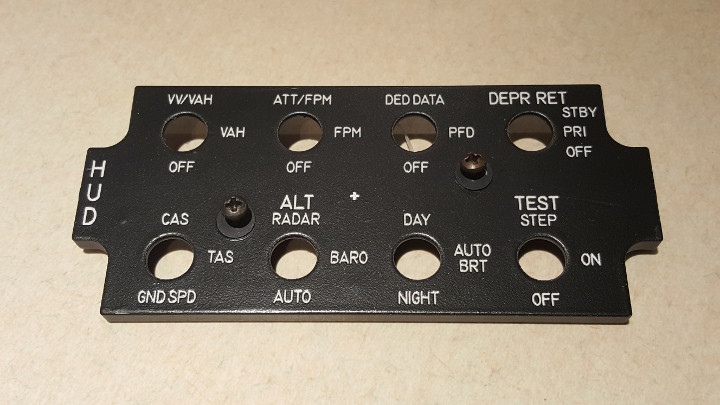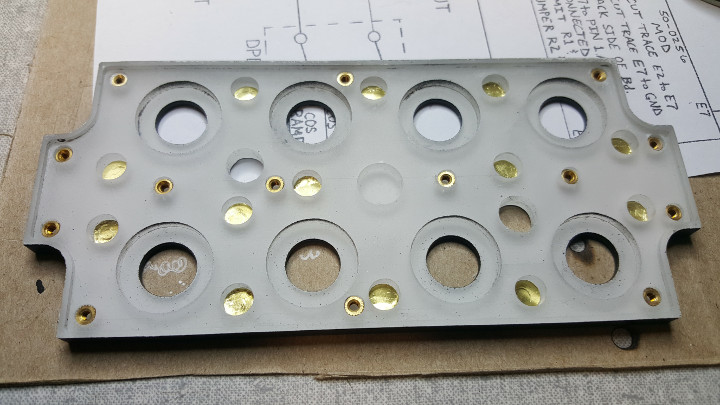Bartek,
Thanks for the link to the video.
All of this discussion prompted me to do a bit more research into color and chromaticity. I found the following YouTube videos to be quite helpful in understanding some of this, especial the 3 “Color Vision” videos by the Ophthalmologist. (There are more than the 3 if you find the topic really interesting as I did since I have some R-G Color Deficiencies in my vision.)
The Chromaticity Diagram
Color Vision 1: Color Basics
Color Vision 2: Color Matching
Color Vision 3: Color Map
As for the paint used by the Pro’s, I can tell you that MIL-P-7788F “Panels, Information, Integrally Illuminated” (you should get a copy of this) calls for FED-STD-595 colors of:
- Black 37038
- Gray 36231
- White 37875 or 37925
- Yellow 33538
You may be able to get a paint shop to mix some Acrylic paint (yes I too think that is what they use) to match those colors. However, I suspect that there may be variations in the light transmission qualities of different paints that meet the above colors that may result in a difference in the reflected color when illuminated by a spectrally pure white light from the front, versus the color seen when the paint is illuminated from the back by the same light. Basically, what I’m saying is that the wavelengths absorbed by the paint may differ for reflected light versus transmitted light. Getting a paint that doesn’t have a significant difference between reflected and transmitted chromaticity may be why the actual paint they used is kept “Top Secret” by the Pros.
Also, I think I quoted the wrong chart in my last post. I think this is the correct graph which shows what they call the type (1h) Lunar White range.
You can see that this range includes the “E” equal energy “White” point of x=.33, y=.33 discussed in some of those videos. Unfortunately, this comes from the old MIL-C-25050A document and it has been superseded by SAE AS25050 document which is copyrighted and costs $76 to download from SAE so I don’t have the latest info there. Still I think the old spec is close enough for us.
As for removing the paint by milling, I’d like to know more details on how you are doing that. It seems to me to be pretty difficult to jig up the panel so that it is perfectly aligned and centered so that the milling process just takes of .1mm inside the pockets. (That’s only .004" to us non-metric types. Yikes!)
You’ll notice in the video that they are using a special electronic measurement tool on their CNC that accurately probes the panel to determine the exact X,Y,Z center of the material. I guess one can do that manually but to .1mm (.004") accuracy???
They also have an expensive machinists vise that has been mounted and calibrated to be perfectly flat to the mill. This makes it difficult for the hobbyist to accomplish in my opinion so I’ll be interested in more details on how you do this yourself using hobbyist milling equipment. (Or maybe you’re using a high-dollar mill at your Makerspace to do this. I’m doing my milling in my home shop using a NextWave Automation CNC Shark Pro HD1 so it’s hard for me to achieve this sort of accuracy with just a $4000 CNC.)
In my case, I’m using circular lamp pockets which are easy to plug while painting thereby avoiding milling off the paint. However, if you are using the “race-track” pockets, finding a plug for those pockets is more difficult. (Although you probably could machine a set.)
Also, I don’t think you need to go the heat resistant paint route. I doubt you are getting any heat related yellowing of the paint here. I think the heat sink prevents heat damage and if you are using LED’s, I doubt they produce enough heat to worry about but I could be wrong. Additionally, I’ll bet that the additives to make the paint heat resistant will affect the chromaticity of the transmitted light making it more trouble than it is worth.
Finally, here’s another tip from the pro’s: clean off the residue with 409, Castrol Super Clean or Simple Green. (Not sure you guys have those products in the EU but I’m sure you have something similar.) Using masking tape only makes getting the laser speed/power just right more difficult in my opinion. 409, Simple Green or Castrol Super Clean is what I’ve been using on all my dials and panels and it works nicely. BTW, once the panel is finished, I give it a few coats of Krylon Matte spray to protect it. I’ve been told some of the pros use Polyurethane with a flattening agent as the final protective coat.
P.S. I misspoke in my previous post. It is “Rustoleum” 2x Painters Choice paint, not “Krylon”.




 He says that it smells like acrylic, that’s the only thing he can tell…
He says that it smells like acrylic, that’s the only thing he can tell…



